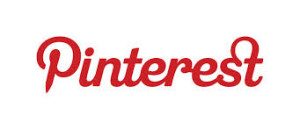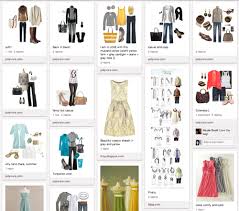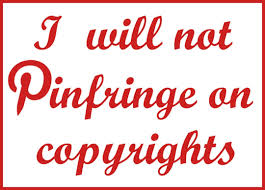Pinterest Company History
 Pinterest is one of the relatively new social networking platforms currently taking the internet by storm. Just about three years old, the website is already one of the top ten social networking sites and won a Webby award last year in the best social media app category. Pinterest allows users to browse content, mostly images although videos are also very popular, and then bookmark their favourites in various collections. This process is known as “pinning” and user galleries are their “pinboards”.
Pinterest is one of the relatively new social networking platforms currently taking the internet by storm. Just about three years old, the website is already one of the top ten social networking sites and won a Webby award last year in the best social media app category. Pinterest allows users to browse content, mostly images although videos are also very popular, and then bookmark their favourites in various collections. This process is known as “pinning” and user galleries are their “pinboards”.
 The easiest way to pin images to your board is by browsing other users’ pinboards and then “re-pin” any photos that you like. Members can also use the “pin it” button on blogs or websites, or the “pin it” function that can be installed on certain browsers. Pinboards are usually themed around the users’ interests, and the vast sea of content on Pinterest is automatically sorted into four main categories for members to browse: everything, videos, popular and gifts. Some of the most popular categories on the site are travel, food, fashion, art and interior design.
The easiest way to pin images to your board is by browsing other users’ pinboards and then “re-pin” any photos that you like. Members can also use the “pin it” button on blogs or websites, or the “pin it” function that can be installed on certain browsers. Pinboards are usually themed around the users’ interests, and the vast sea of content on Pinterest is automatically sorted into four main categories for members to browse: everything, videos, popular and gifts. Some of the most popular categories on the site are travel, food, fashion, art and interior design.
Co-founders Ben Silbermann, Paul Sciarra and Evan Sharp started working on Pinterest in 2009, and opened the site to some members of the public in a very restricted beta format in March 2010. It subsequently moved towards an open beta format, where users could access the website if they had an invitation from an already registered member. Co-founder Ben Silbermann closely engaged with the website’s first five thousand users, and sent them a personal email with contact details including his mobile phone should they wish to discuss their experience with Pinterest. He went as far as personally meeting up with a few users to ensure the platform can benefit fully from its beta testers. Pinterest reached 10,000 users roughly nine months after its launch – at this time the website was operated from a flat by Silbermann and a few programmers.
Even though the first attempt to sell off the website to a New York publishing company failed, Pinterest is currently well-funded by numerous investors. The list of entrepreneurs supporting the project includes Michael Birch of Bebo, Jeremy Stoppelman of Yelp, Kevin Hartz of EventBrite, and FirstMark Capital. Other significant investments were a ten million dollars financing in 2011 from Bessemer Venture Partners and 27 million dollars from Andreessen Horowitz. In late 2011, Pinterest was valued at 200 million dollars.
 Pinterest is valuable to retailers as it attracts many style conscious people who are particularly interested in fashion and design. The platform allows businesses to set up professional pages which can serve as a shop window display for their customers, and Pinterest has proven to be a valuable marketing tool for online retailers. It fares even better than Facebook: customers who come from Pinterest spend almost 100 dollars more in the store than those who found the retailer on Facebook. The platform also appears to be more popular with women, and globally there’s a very high majority of female users. However, some interesting facts emerge when looking at individual countries – in the United Kingdom for example, more than half of Pinterest users are actually male.
Pinterest is valuable to retailers as it attracts many style conscious people who are particularly interested in fashion and design. The platform allows businesses to set up professional pages which can serve as a shop window display for their customers, and Pinterest has proven to be a valuable marketing tool for online retailers. It fares even better than Facebook: customers who come from Pinterest spend almost 100 dollars more in the store than those who found the retailer on Facebook. The platform also appears to be more popular with women, and globally there’s a very high majority of female users. However, some interesting facts emerge when looking at individual countries – in the United Kingdom for example, more than half of Pinterest users are actually male.
Retailers further benefit from the platform thanks to its highly visual layout, and many brands use it in order to showcase their products in a better way and reach out to potential new customers. The “re-pinning” function also helps them reach a wider audience, as more people are likely to trust a recommendation from a friend rather than one coming from the business account. Users with similar interests can also be linked with brands they could potentially like, which further reinforces the idea of a shopping community. While people come to the website for inspiration, statistics show that they are very likely to click links and actually purchase items from online retailers.
Moreover, Pinterest is also a useful platform to analyse people’s consumer behaviour and collect what some people have called “affinity data”. This is mainly information related to the relationship between consumers and products, which can be very valuable to retailers and marketing companies when it comes to understanding the markets better and creating promotional campaigns. This data is highly valuable, which may explain Pinterest’s scarily high rise in value – it went from 1.5 billion dollars in 2012 to 2.5 billion in 2013.
As a website which is popular mainly because of its members’ ability to share content, Pinterest has not steered clear of controversy when it comes to the copyright of images made available through the website. The initial version of its terms of use stated that any image uploaded to Pinterest automatically became owned by Pinterest, with the user who uploaded it giving up any rights they may have had over the photo.
 This raised concerns not only with artists who were uploading their works to the website for promotion, but also with the wider population of the internet. Pinterest users uploading images they have found online to Pinterest would cause any copyright these images could have had to be voided, thus damaging the artist. Users who did pin copyrighted material could face legal action for doing so. Other image hosting websites such as Flickr included “no pin” options for their users, which meant that pinning was automatically disallowed for certain images at their creators’ requests.
This raised concerns not only with artists who were uploading their works to the website for promotion, but also with the wider population of the internet. Pinterest users uploading images they have found online to Pinterest would cause any copyright these images could have had to be voided, thus damaging the artist. Users who did pin copyrighted material could face legal action for doing so. Other image hosting websites such as Flickr included “no pin” options for their users, which meant that pinning was automatically disallowed for certain images at their creators’ requests.
The controversial terms and conditions were updated in March 2012, and Pinterest officially stated that they never intended to sell the content uploaded to the site. However, issues with copyright still remain and many artists and photographers have expressed concerns over the matter, including Getty Images who responded by engaging in conversation with Pinterest in order to reach a common ground.
Whatever the conclusion regarding copyright on Pinterest will be, we cannot deny that the platform has provided us with invaluable insight into what internet users like, what they get inspiration from, and perhaps even what they aspire to be. The website is a goldmine for retailers, and while it may prove to be tricky ground for content creators, it currently appears to be an attractive and lucrative corner of the social media landscape.
